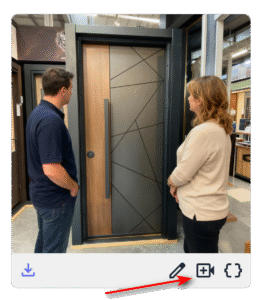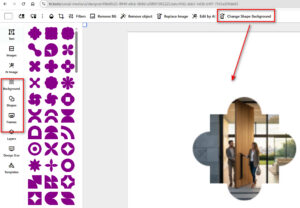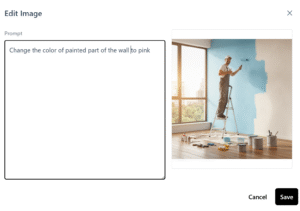How to Create a Professional QR Code with Logo Using Tri.Tools
This guide provides a comprehensive, step-by-step process for generating high-quality QR codes using Tri.Tools, tailored for professional applications such as print, packaging, menus, or digital links. Whether you’re a small business owner or part of an enterprise team, this guide ensures your QR codes are reliable, scannable, and branded effectively.
Quick Steps to Generate a QR Code
- Access the Tri.Tools QR Code Generator.
- Select QR Code Type (e.g., URL, text, or other data types).
- Enter your content (e.g., a URL).
- (Optional) Upload a logo for branding.
- Choose output format (PNG or SVG).
- Select Error Correction level (High recommended for logos).
- Adjust Scale for appropriate size.
- Click Generate, preview, and download.
Detailed Steps for Creating a Professional QR Code
- 1. Select the QR Code Type
Choose the data type to encode in the QR Code Type dropdown. For linking to websites, booking pages, or digital menus, select URL. For optimal performance, use concise URLs, such as branded short links, to enhance scanning reliability.
- 2. Input Your Content
Enter your content in the designated field (e.g., paste a URL for a website). Verify the URL is publicly accessible and functional by testing it in a browser before generating the QR code.
- 3. Add a Logo (Optional)
To brand your QR code, upload a logo in PNG or SVG format via the Choose file option. For best results:
- Use a simple, high-contrast logo.
- Avoid intricate details or thin lines to ensure scannability.
- Keep the logo centered and appropriately sized.
4. Choose an Output Format
Select the appropriate file format based on your use case:
- PNG: Ideal for digital applications, such as social media, emails, or standard print jobs.
- SVG: A vector format perfect for high-resolution printing, signage, or professional design software, ensuring scalability without quality loss.
5. Set Error Correction Level
Choose an Error Correction level to ensure scannability, especially under challenging conditions:
- High (≈30% redundancy): Recommended when adding a logo or for printed QR codes subject to wear and tear.
- Medium: Suitable for clean, logo-free QR codes used digitally.
- Low/Quartile: Use sparingly for simple, high-contrast digital applications.
6. Adjust the Scale
Use the Scale slider to set the QR code’s size:
- Digital use: Smaller sizes are generally sufficient.
- Print applications: Ensure the QR code is at least 2 cm (≈0.8 inches) square for close-range scanning. For posters or signage, increase the size and maintain a clear margin (quiet zone) around the code.
7. Generate and Download
Click Generate to create the QR code. Preview the output to ensure accuracy, then download the file. Test the QR code across multiple devices (iOS and Android) under typical lighting conditions to confirm scannability.
Best Practices for Professional QR Codes
To ensure your QR codes perform reliably in professional settings:
- Maximize contrast: Use dark modules on a light background for optimal scannability. Avoid light-on-dark inversions.
- Use short URLs: Minimize data density for faster scanning.
- Maintain a quiet zone: Ensure no text, images, or borders encroach on the margin around the QR code.
- Opt for High Error Correction with logos: This compensates for potential obstructions caused by the logo.
- Test print proofs: Verify scannability from realistic distances (e.g., table to counter, street to window).
- Track performance: Use trackable URLs with UTM parameters or short links to monitor engagement.
Common Use Cases
- Restaurants & Retail: Menus, promotions, product pages.
- Trades & Services: Quote/booking forms, payments, reviews.
- Healthcare & NDIS: Intake forms, location maps, appointment policies.
- Events & Venues: Registrations, schedules, Wi-Fi details, maps.
- Enterprise Operations: Asset tags, knowledge base links, employee apps.
Why Choose Tri.Tools?
Tri.Tools offers a fast, reliable platform for generating QR codes with professional features: logo overlay, PNG/SVG outputs, adjustable error correction, and scalable sizing for any channel. It’s user-friendly for small teams yet robust enough for enterprise deployments.
Frequently Asked Questions
Can I use a QR code with our brand colors?
Yes, but maintain high contrast (dark code on light background). Avoid light-on-dark inversions for reliable scanning.
Which format should I download?
SVG for design/print (scalable vectors). PNG for web and everyday use.
My code won’t scan—what should I check?
Verify contrast, size, quiet zone, and use High error correction if a logo is included.
Is there a limit to logo size?
Keep logos small and centered to avoid covering finder patterns (the three large corner squares).
Get Started with Your QR Code
Create your professional QR code in seconds with Tri.Tools. Add your logo, select the ideal format, and deploy with confidence.







